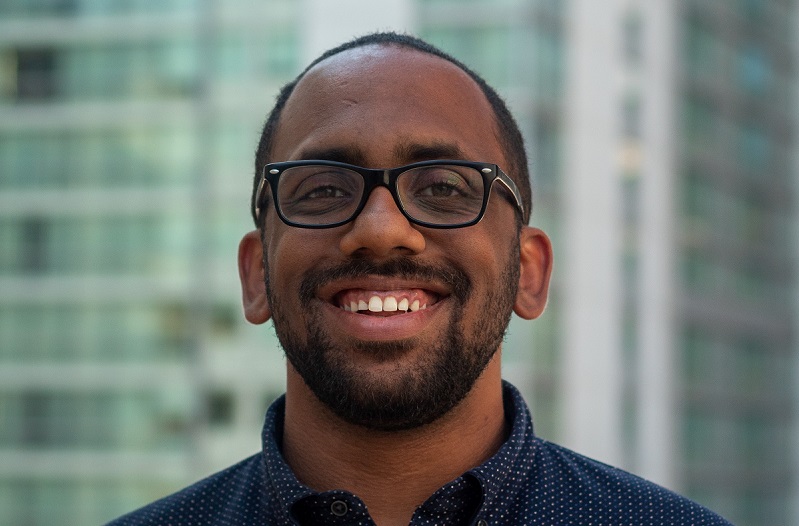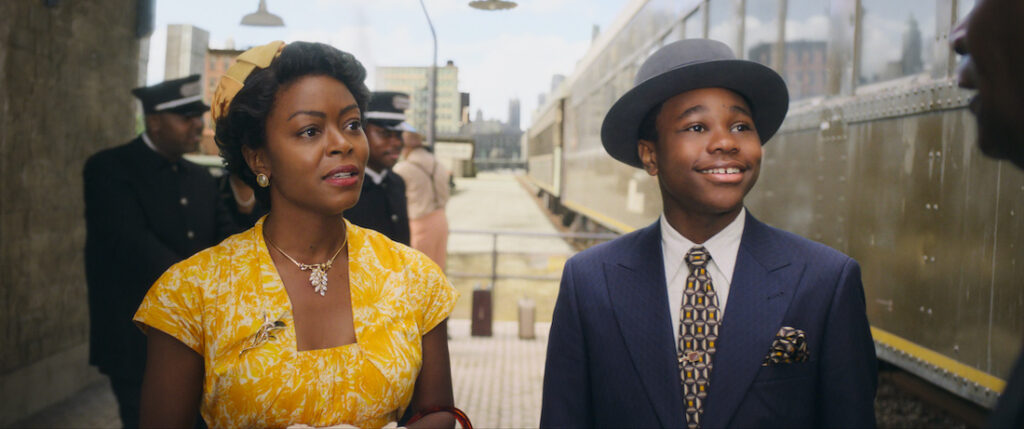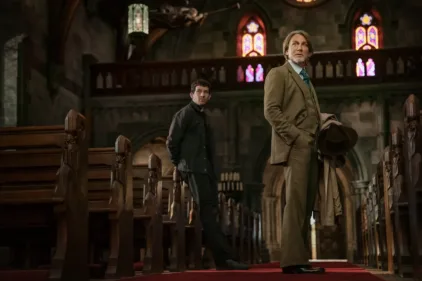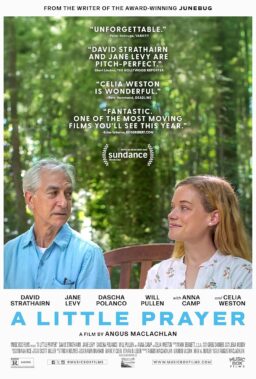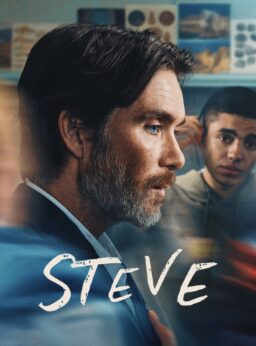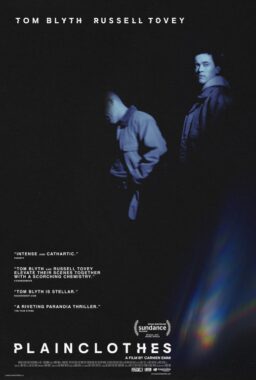“Till” isn’t an easy story to tell. Recalling the 1955 murder of 14-year-old Emmett Till, who left Chicago to visit his cousins in Money, Mississippi before being ripped from his bed by racist white Southerners —“Till” has already ignited passionate discussions surrounding the worthwhileness of depicting Black trauma on screen. Directed by Chinonye Chukwu, a follow-up to her Sundance-winning drama “Clemency,” “Till” isn’t wholly centered around Emmett. Instead, Chukwu levels her focus on Emmett’s mother Mamie (Danielle Deadwyler).
Through Mamie’s eyes, we see her son in the dappled richness of his world in Chicago, a city where he’s allowed to be a joyous teen. Through Mamie we also feel the grief of a mother when she learns of her son’s brutal death. Mamie becomes a lightning rod for justice in a battle that will further ignite the Civil Rights movement and put the Jim Crow South on trial.
“Till” is a gorgeously shot film, one bathed in nourishing light and bursting with vibrant colors. It is deliberate and controlled, featuring some of the best camerawork of this year; it does not succumb to depicting grotesque, unnecessary violence. And yet, it doesn’t shy away from depicting the realities of the crime either. The film also features what might be the best performance of 2022 in Deadwyler, who both physically and emotionally captures the battle of a mother trying her best to keep grief at bay if only to defend the memory of her son.
Chukwu and Deadwyler talked with RogerEbert.com about recreating 1955 Chicago, how the film wrestles with Black trauma, and the coming together of the film’s best shot.

When were you approached about the film and what led you to agree to do it?
CHINONYE CHUKWU: I was asked if I wanted to tell this story three years ago. It was about a month or two after I had premiered my last film, “Clemency.” So I wasn’t in that headspace.
That’s a heavy back-to-back to have.
Yeah. And it’s not just the subject matter. But it’s just, you know, when you’re making a film, you are with it for years. And so I just did not think I was ready to commit the next however many years of my life after having committed five and a half or six years of my life to “Clemency.” But the producers asked me how I would want to tell the story and I told them if I was gonna do this, I would only be interested in telling it through Mamie’s journey and her perspective. It would be almost kinda like a character study because I want to center this Black woman in her rightful place in history. Black women are so often erased from history and from the present and from stories about the Civil Rights movement that I actually started to get excited at the opportunity to present Mamie as a fully realized multidimensional human being.
So getting into the story in that way was what hooked me. And the creative autonomy that I was given to really do my thing. In every aspect of this film, [the producers] left me alone. They were supportive. But they left me alone because they believed in my artistic ability. And then when we cast Danielle it was just like: Okay, yeah. Now we’re doing this. It got me all excited to tell this story.
And Danielle, how did you come aboard?
DANIELLE DEADWYLER: Oh, like a traditional actor. Submitting self tapes and running away from it as much as I possibly could. [laughs]
In the midst of reading the script very slowly—because I’ve known about Emmett Till all of my life, since I was in elementary school, and the surface-level experience of it–the images, the story, the myth, that heroic myth of her making that choice and sharing it with the world—but I didn’t know about the depth and the intimacy or the transcripts of the court. That kind of stuff was not a part of my understanding. I didn’t get to that until we started to really dive in.
I had a director session with Chinonye, as well. So just having those standard markers of coming into it as an actor, but having the personal experience of really understanding that legacy, as a person that comes from Atlanta, as a person who has volunteered with Civil Rights organizations like the Southern Christian Leadership Conference and being reared in the Cascade United Methodist Church where Reverend Dr. Lowry was pastor—I know Civil Rights history. I understand the Civil Rights movement’s legacy. And a number of those people, unbeknownst to me as a kid, had rich connections to Mamie. And so all of that came full circle for me.

I think about Chicago, too. My dad, he was born the same year as Emmett, and from Mississippi too.
CC: Whoopi was born in 1955.
I think for every Black person of that generation, especially since Chicago is the biggest small town, especially in the Black community, it passed through everyone. This film shows that very well. I wanted to also talk about the lighting in this film. Because it is so bright. It might be the brightest film I’ve seen this year. Could you go a bit into the lighting?
CC: I communicated early on to my department heads, including Bobby Bukowski, the great Bobby Bukowski, my cinematographer; I said I want a bright, colorful, vibrant, bold color palette and a world to reflect the brightness, the beauty, the richness of Back people and of black spaces.
I also love the camera movement in this film, particularly during Mamie’s cross examination, which is basically just a one-shot. Could you talk about that set-up? And Danielle, if you could talk about executing your performance. Did you all always know it was going to be a one-shot?
CC: No. I did not. Bobby and I came in with a plan to have to shoot eight or nine different setups. And we thought: Okay, these are the shots we need to communicate what the emotional beats are in the subtext and in the story. So we started with what was a close up on Danielle. And after the first take I said – Damn.
I plan meticulously ahead of time so I can throw everything out the window when I get on set and I feel comfortable doing so. I’m very present to the magic that can happen on set in real time. And what I witnessed after that first take was magic. You just cannot plan for it, but you have to be able to receive it. So Bobby and I looked at each other like: We could do this in an oner.
It just required some adjustments. So racking from the jury to Mamie is establishing the spatial relationship. Adjusting the composition and framing so we see the hands of the lawyers or the ring or the photos. So we are clear about the people and the world that exists beyond the frame who are putting continuous pressure on Mamie. Bobby and I talked about the strategic timing of when the camera works around Mamie, and we just stayed on her, keeping the pressure on her, staying in her emotional moment and complexity in real time because that’s something that you can’t replicate with cutting between eight or nine setups. It took six takes to really make those adjustments and whatnot before we got it right. And what we see in the film is the sixth take.
DD: And I don’t know any of this because it’s not my business. [laughs]
And you know the magic of it is just what it is. It’s Chinonye and I working that out beforehand because that’s what we did with the entirety of the script. You know, what is Mamie upholding at this moment? She’s upholding the legacy and the memory of him, and she’s defending his legacy and his memory. And there’s a tension in the public thinking about the public nature of who she has to be in this moment, and how she has to be in order to share this information.
It is also a part of that remembrance of his body, from once we first saw him all the way to the close of the film, and thinking about humanizing him in that moment. So that’s all cast onto this moment. And I just live in it because that’s what you’re supposed to do. I’m a theater actor by trade. And everything I do is rooted in that. It’s a scene. If you’re in theater, you’re in the play. You’re living in the world. So I’m living in the world. And that’s what came out.
Much of this film was shot in Georgia: What difficulties did you face in recreating the South Side of Chicago, and Chicago in general, in that state?
CC: So my best friend is from Chicago. She’s from several generations of Chicagoans. So the look on her face if I f**k this up, was in my head for every creative decision. [laughs]
It was like: Oh, what would my best friend’s family say? I can’t do that. So I was so meticulous and adamant that we can’t f**k it up. Marci Rodgers, an incredible costume designer, is from Chicago. Thank God! She was a great resource. There are definitely times when I FaceTimed my best friend and her family members, especially her older family members, like her grandmother, who was alive during this time period, and asked: Does this look right? Or does this look right?
There are some people on the crew, like our post-production supervisor is from Chicago and remembers this time period, and so he was also a resource. That, in combination with photos and videos, and different kinds of firsthand accounts, all informed how we wanted to create Chicago. Some VFX work was inevitable. But one of the great things about shooting in Georgia is that the state looks so different piece by piece. You have parts that can be dressed as downtown Chicago or parts that could be dressed as rural Mississippi. So it wasn’t, and it was a challenge.

The opening tilt onto Marshall Fields is great. It’s not exactly Marshall Fields, but it’s a good facsimile.
CC: We do the best we can to honor the emotional truth.
I will say, I did have to pause to be sure.
CC: See, I knew you Chicagoans would do that. [laughs] So I was like, I can’t mess this up, man.
That’s what we do! Chicago is a petty city.
CC: Oh, listen, I get it. I fully expect people from Mississippi to also press pause. Like, if there’s anything with anything Alaska or Nigerian, I’m looking.
Not to purposely go down beat, but I wanted to get into the weight of Black witness during 1955 as opposed to now, especially when, in 2022, the images of Black trauma are nearly inescapable. Is the power of witnessing the same today as in 1955?
DD: No. This is the thing, this is the beauty of witnessing the way Mamie did it because that’s called critical care. That was her making the choice to show this body. When you see this body for the first time, at a time where you’re not seeing things, then your eyes are opened. She called it a global awakening. It was an awakening for her, personally. And as she’s having this experience, she knows that others need to have it too. She knows America needs to have it. She knows the world needs to have it. And so this body is witnessed with care.
Everything you see today is in defense, in reaction. It is a gotcha moment. It is scary. It is out of fear. And even if it does come from the hands of Black people, or any other person of color trying to say—Look at what’s going on—it still holds a different tension.
There is softness, there is love behind showing the humanization of his body, as opposed to now, where we’re witnessing the dehumanization and the objectification and the violence that’s enacted on the body. We’re seeing the remembrance of violence here. And we’re seeing that casted with humanity. We’re seeing the violence here in 2022. And that’s the problem. That’s the chasm. That’s the critical moment that’s being asked in this film. And that’s the joy of it too. There is love and joy in the legacy of these images and in the intention behind these images that is an extension of Mamie’s critical care.

What do you hope people take away from this film?
CC: There’s so much to this story that a lot of us don’t know about. I hope that this can provide a great education, and it can also inspire people to want to learn more about the community of Mount Bayou, Dr. T.R.M. Howard, Ruby Hurley, et cetera, and to also inspire people to really interrogate within themselves how they want to be agents of change in the world. How do they, how can they, how can we get outside of our own individual bubbles and perpetuate change in a way that impacts the next person?
I think that this is also a film that can inspire hope and possibility. And Mamie’s legacy is also about hope and possibility, and believing that even if we don’t see the change we want to see in our lifetimes, we can still help to move it forward and still live and still stand in our power unapologetically, and stand in our joy in our community no matter what. Because that is also a form of resistance.
DD: And love is a form of resistance. And this film is about a mother’s love.
“Till” will be available in theaters starting October 14th.
